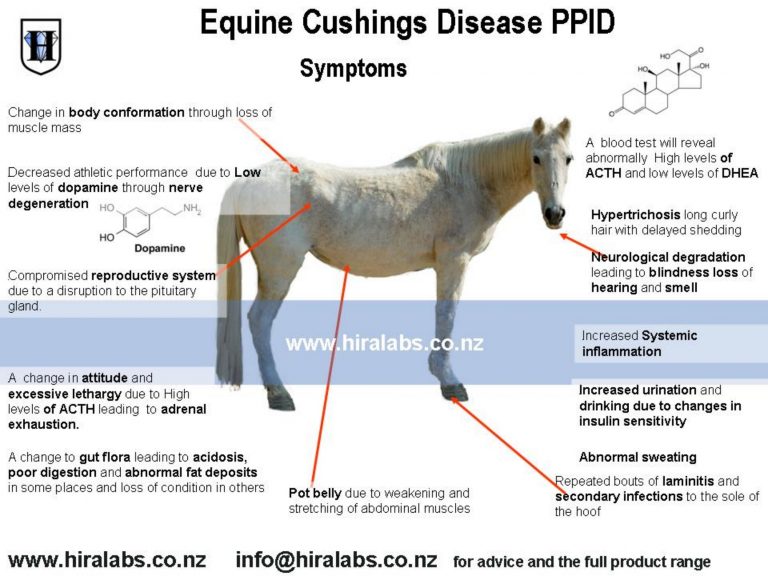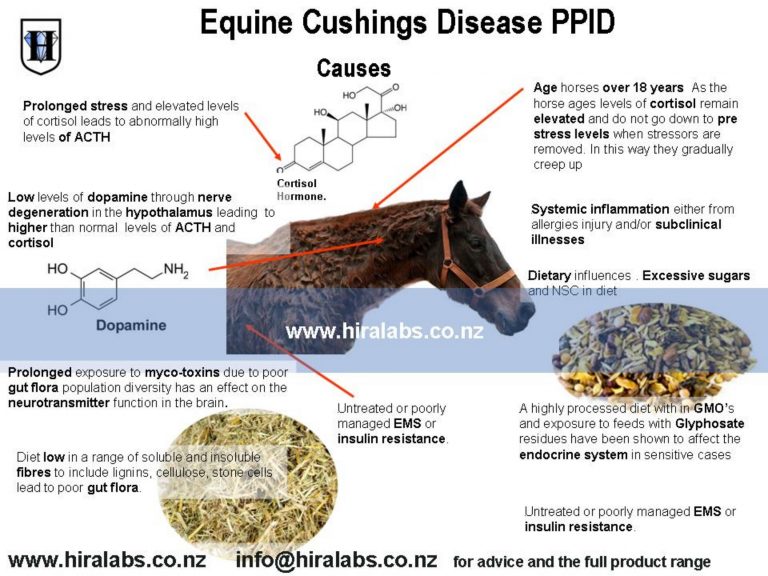Equine Cushings-like Syndrome (PPID)
By Nick Page, BVSc

PPID appears much more commonly in older middle-aged to aging equids. Certain species and breeds appear more at risk of developing the disease (Morgan horses, ponies and possibly donkeys).

The laminitis symptoms are thought to result from the influence of excessive cortisol secretion on blocking the effects of insulin on target cells, which in turn can directly result in constriction of small arterioles supplying oxygenated blood to the foot. Also, this can result in a type-2 diabetes situation similar to humans resulting in high levels of circulating glucose, which causes similar vascular effects as described above.
The result is that the cells of the laminae of the hoof get inadequate oxygen supply and die. This results in laminitis, the details of this specifically can be covered in a future article.
PPID should not be confused with Equine Metabolic Syndrome (EMS), which is a separate stand-alone disease. EMS also commonly results in laminitis, but its diagnosis and treatments are different from that of PPID.
Dr Nick Page has been a practicing veterinarian for over 20 years now. He has a passion for surgical diseases and treatment and throughout his career has amassed specific skills in more advanced surgical treatments and diagnostics associated with surgical diseases. Nick has a specific interest in equine medicine He holds administrative and clinical roles with Equestrian Sport New Zealand with a portfolio in the Endurance discipline .
Nick practices at Rolleston Veterinary Services in Rolleston, NZ .

